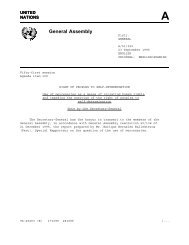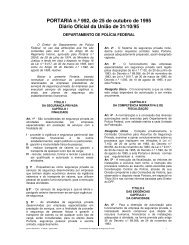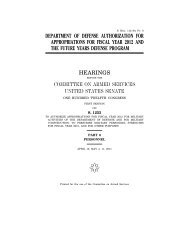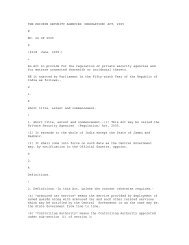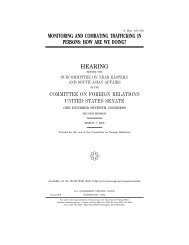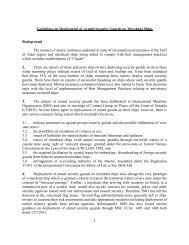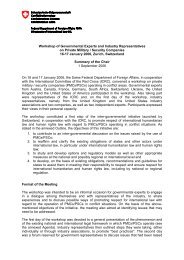Security Assistance; and Logistics - Federation of American Scientists
Security Assistance; and Logistics - Federation of American Scientists
Security Assistance; and Logistics - Federation of American Scientists
You also want an ePaper? Increase the reach of your titles
YUMPU automatically turns print PDFs into web optimized ePapers that Google loves.
MNC—I had not fully identified the barriers to improving Iraqi Army medical care,devised a plan to address those barriers, or effectively advised <strong>and</strong> assisted MoD with astrategy to overcome them.Combat Casualty CareCombat casualty care was largely unavailable within the Iraqi Army health care system.For example, anecdotal reports <strong>of</strong> 115 patients transported to Baghdad after recentoperations in Basra indicated that no medical care was provided by the Iraqi Army beforeor during patient movement. Iraqi Army combat divisions had only 11 percent <strong>of</strong> the 588doctors authorized <strong>and</strong> 32 percent <strong>of</strong> the 7,410 allied health personnel authorized.MoD did not have its own functioning hospitals to care for soldiers. The Iraqi Army hadbasic <strong>and</strong> advanced clinics at all <strong>of</strong> its regional garrisons, though none <strong>of</strong> those clinicswere fully staffed. Garrison clinics had 31 percent <strong>of</strong> the 98 doctors authorized <strong>and</strong> 77percent <strong>of</strong> the 658 allied health personnel authorized. The U.S. was finishingconstruction on just one new Iraqi Army field hospital, funded through Foreign MilitarySales.All inpatient care for soldiers had to come from civilian hospitals operated by MoH, butpoor security within those facilities had allowed acts <strong>of</strong> uncontrolled sectarian violenceby militia units against soldiers, limiting their access to hospital care. Recently, MoD<strong>and</strong> MoH had created two short-term ad hoc partnerships in which MoD had providedsecurity for a hospital wing in a civilian hospital where soldiers were protected frommilitia violence. Those partnerships show potential for meeting the inpatient needs <strong>of</strong>soldiers nationwide if security conditions continue to improve.Recruiting <strong>and</strong> Retaining Medical PersonnelThe Iraqi Army was unable to recruit or retain sufficient medical staff. Physician staffingwas at 18 percent <strong>of</strong> requirements <strong>and</strong> was falling as physicians fled the country orresigned from the military to work in civilian hospitals. In addition to the exodus <strong>of</strong>physicians since 2003 due to the deteriorating security environment, military service wasseen as undesirable because military physicians were paid approximately half as much asMoH physicians <strong>and</strong> were <strong>of</strong>ten required to work in clinics distant from their families,rather than in hospitals near their homes.Dentists, nurses, combat medics, medical logistics, administrative, <strong>and</strong> allied healthsupport personnel were also staffed at critically low levels, far below those required, <strong>and</strong>few junior <strong>of</strong>ficers, non-commissioned <strong>of</strong>ficers, <strong>and</strong> soldiers were in place. Nursestaffing was at 29 percent <strong>of</strong> requirements, <strong>and</strong> medics were at 46 percent.Iraqi Army Medical Education <strong>and</strong> TrainingInitial training, upgrade training, <strong>and</strong> continuing medical education for Iraqi Armymedical care personnel was lacking. Moreover, initial medical training classes at theIraqi Army Support <strong>and</strong> Services Institute were only about 30 percent filled because <strong>of</strong>the low value ascribed to training medical personnel by the Iraqi Army line leadership.127





